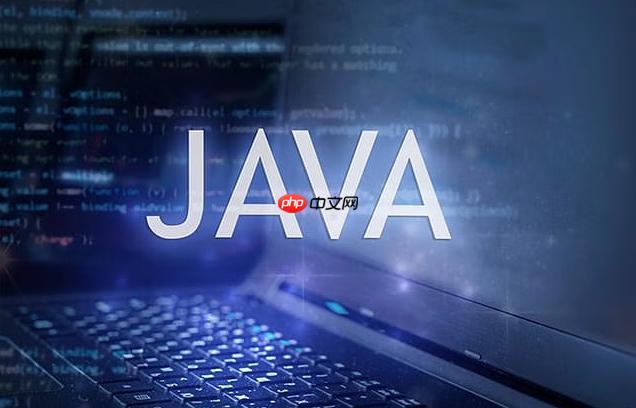DelayQueue基于优先级队列实现,用于存放实现Delayed接口的对象,只有延迟时间到达后才能被取出,适合处理延迟任务调度。

在Java中,DelayQueue 是一个无界阻塞队列,用于存放实现了 Delayed 接口的对象。只有当对象的延迟时间到达后,才能从队列中获取并处理它。这使得 DelayQueue 非常适合用于实现延迟任务调度,比如定时清理缓存、延迟发送通知、超时订单关闭等场景。
DelayQueue 内部基于优先级队列(PriorityQueue)实现,元素按延迟时间排序。队列中的元素必须实现 Delayed 接口,该接口有两个关键方法:
只有当 getDelay() 返回值小于等于0时,元素才会被 take() 方法取出。如果队列为空或没有到期的任务,take() 会阻塞直到有任务可取。
下面是一个使用 DelayQueue 实现延迟消息打印的简单例子:
立即学习“Java免费学习笔记(深入)”;
import java.util.concurrent.*;
<p>// 定义延迟任务
class DelayedTask implements Delayed {
private String message;
private long executeTime; // 执行时间戳(毫秒)</p><pre class='brush:java;toolbar:false;'>public DelayedTask(String message, long delayInMs) {
this.message = message;
this.executeTime = System.currentTimeMillis() + delayInMs;
}
@Override
public long getDelay(TimeUnit unit) {
long diff = executeTime - System.currentTimeMillis();
return unit.convert(diff, TimeUnit.MILLISECONDS);
}
@Override
public int compareTo(Delayed other) {
return Long.compare(this.executeTime, ((DelayedTask) other).executeTime);
}
@Override
public String toString() {
return "DelayedTask{" +
"message='" + message + '\'' +
", executeTime=" + executeTime +
'}';
}}
使用 DelayQueue 和消费者线程处理任务:
public class DelayQueueExample {
public static void main(String[] args) {
DelayQueue<DelayedTask> queue = new DelayQueue<>();
<pre class='brush:java;toolbar:false;'> // 添加多个延迟任务
queue.put(new DelayedTask("任务1 - 3秒后执行", 3000));
queue.put(new DelayedTask("任务2 - 1秒后执行", 1000));
queue.put(new DelayedTask("任务3 - 5秒后执行", 5000));
// 启动消费者线程
Thread consumer = new Thread(() -> {
try {
while (!Thread.interrupted()) {
DelayedTask task = queue.take(); // 阻塞直到任务到期
System.out.println("执行: " + task.message +
" (当前时间: " + System.currentTimeMillis() + ")");
}
} catch (InterruptedException e) {
Thread.currentThread().interrupt();
}
});
consumer.start();
// 主线程等待一段时间后中断消费者
try {
Thread.sleep(6000);
} catch (InterruptedException e) {
e.printStackTrace();
}
consumer.interrupt();
}}
输出结果会按照延迟时间依次执行任务,即使任务插入顺序不同,也能保证最早到期的任务先执行。
在真实项目中使用 DelayQueue 时,可以结合以下技巧提升稳定性和性能:
poll() 替代 take(),或者设置超时时间的 poll(long timeout, TimeUnit unit)。ScheduledExecutorService 进行监控和重启。DelayQueue 适用于对精度要求不极高但需要轻量级延迟调度的场景。相比 Timer 或 ScheduledThreadPoolExecutor,它更灵活,支持动态添加和取消任务。
需要注意的是:
compareTo,否则可能导致队列行为异常。基本上就这些。掌握 DelayQueue 的使用,能帮你优雅地处理很多延迟任务问题,关键是理解它的阻塞机制和排序逻辑。实际开发中搭配线程模型和异常处理,就能构建出稳定的延迟任务系统。
以上就是在Java中如何使用DelayQueue处理延迟任务_DelayQueue集合实践技巧的详细内容,更多请关注php中文网其它相关文章!

每个人都需要一台速度更快、更稳定的 PC。随着时间的推移,垃圾文件、旧注册表数据和不必要的后台进程会占用资源并降低性能。幸运的是,许多工具可以让 Windows 保持平稳运行。

Copyright 2014-2025 https://www.php.cn/ All Rights Reserved | php.cn | 湘ICP备2023035733号